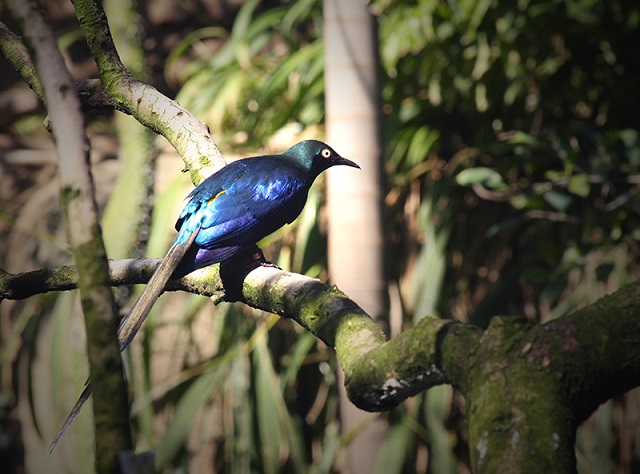 This African Starling displays its iridescent structural colors produced by ordered melanosomes. — Photo by Liliana D’Alba.
This African Starling displays its iridescent structural colors produced by ordered melanosomes. — Photo by Liliana D’Alba.
A study conducted at The University of Akron by Dr. Matthew Shawkey, associate professor of biology and Dr. Ali Dhinojwala, Morton Professor of Polymer Science and Ming Xiao, graduate student in collaboration with the University of California, San Diego aims to reconstruct structural color patterns observed in the feathers of birds so that color can be created without the need for pigments and dyes.
If the researchers are able to accomplish their goal, it is very likely that we will soon have T-shirts that do not fade and cars that do not need to be re-painted.
The key feature of structural color is that the hue will not reduce and it could probably be modified according to a person’s selection. Shawkey and his team aimed to create synthetic particles which could imitate the miniature packets of melanin found in the feathers of a bird.
Milestone in Biomimicry Research
These tiny synthetic melanin packets create structural color when arranged in layers. Structural color can be created when light interacts with materials possessing patterns on a miniature scale, which reflect light to render some bright and some dark wavelengths.
These research findings form the basis of a budding field which is keen to enhance human life by replicating the achievements of natural designs and techniques.
Structural color especially has several probable purposes. According to Dhinojwala, “One could think about applications as sensors, photo-protectors, and even perhaps an approach to create a wide range of colors without using any pigments,” he says.
Pigments are both financially and environmentally costly, and can only change color by fading. Structural colors can, in theory, be produced from more common, environmentally friendly materials and could potentially be changed depending on the environment or your whims.
Shawkey
The team published their findings in the journal ACS Nano, and it is viewed as a milestone in Biomimicry research.
References